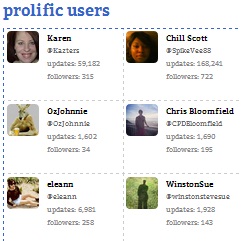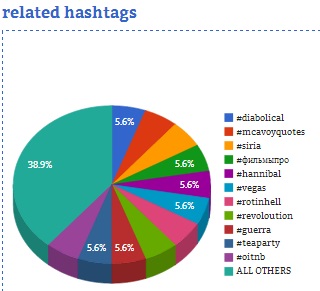More individuals and companies are using hashtags to strengthen their marketing campaign on social media platforms.
After each campaign, many also refer to social analytics tools to determine how well their hashtag trended -- and specifically check the responses and impressions made over a span of 24 hours or 7 days.
Other types of information are also provided by analytics tools, such as related hashtags. Knowing about these will help improve future campaigns and methods.
 Courtesy of Hashtags.org Analytics
Social analytics tools can determine the existing ones that are highly related to the topic or industry you?re planning to focus on. You can either make a spin-off of the main ones or come up with another full discussion, providing more content-rich materials and unique perspective that social media users will be interested in.
Checking existing hashtags will also give you ideas on how competitors attract the target market. Use their effective techniques then point out some of the weak areas that you can capitalize on. Also, you can avoid using the exact words to set yourself apart.
Courtesy of Hashtags.org Analytics
Social analytics tools can determine the existing ones that are highly related to the topic or industry you?re planning to focus on. You can either make a spin-off of the main ones or come up with another full discussion, providing more content-rich materials and unique perspective that social media users will be interested in.
Checking existing hashtags will also give you ideas on how competitors attract the target market. Use their effective techniques then point out some of the weak areas that you can capitalize on. Also, you can avoid using the exact words to set yourself apart.
 Courtesy of Hashtags.org Analytics
Take this knowledge and merge it with what the related hashtags are on this specific hashtag and you get information on how what people are talking about alongside yours. This will give you, the marketer, a wider perspective on where the advertising efforts should go and how your strategies should be crafted.
Courtesy of Hashtags.org Analytics
Take this knowledge and merge it with what the related hashtags are on this specific hashtag and you get information on how what people are talking about alongside yours. This will give you, the marketer, a wider perspective on where the advertising efforts should go and how your strategies should be crafted.
 Courtesy of Hashtags.org Analytics
Courtesy of Hashtags.org Analytics
1. Gauging the competition
Before you begin any hashtag, it is a rule to find out if there are other similar hashtags already created. If there are none, defining it will be a good way to start. Courtesy of Hashtags.org Analytics
Courtesy of Hashtags.org Analytics2. Finding relevant users
When joining related hashtags, you can find a few vital social media users with a huge following who will serve as assets in your future campaigns. Establish solid relationships with these individuals and invite them to your online events and discussions. Tagging or getting their interest will keep you visible on their streams, thereby increasing the likelihood of gaining new loyal followers and relevant customers. These key persons will also share useful and fresh content that will keep the hashtag trending well for several hours or days. For example, running the HBO TV show #TheNewsroom hashtag on analytics will reveal the following "most prolific users" for the moment. Courtesy of Hashtags.org Analytics
Courtesy of Hashtags.org Analytics Courtesy of Hashtags.org Analytics
Courtesy of Hashtags.org Analytics


